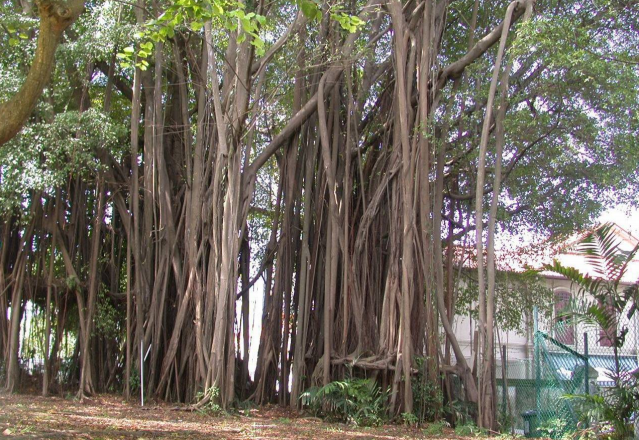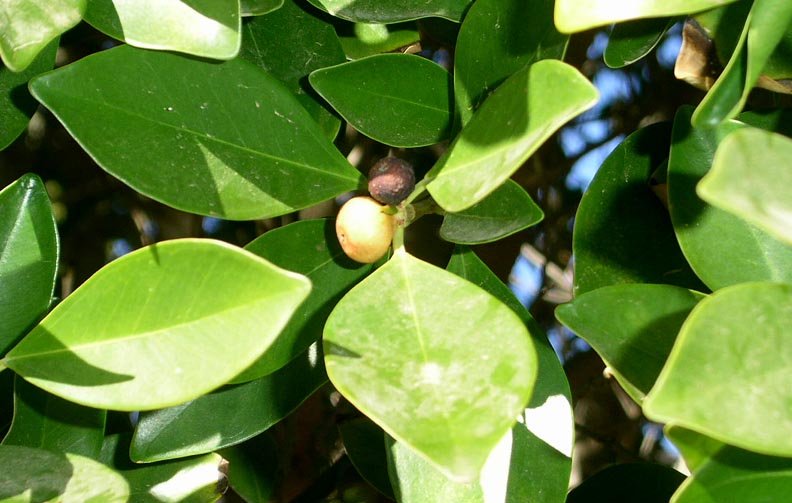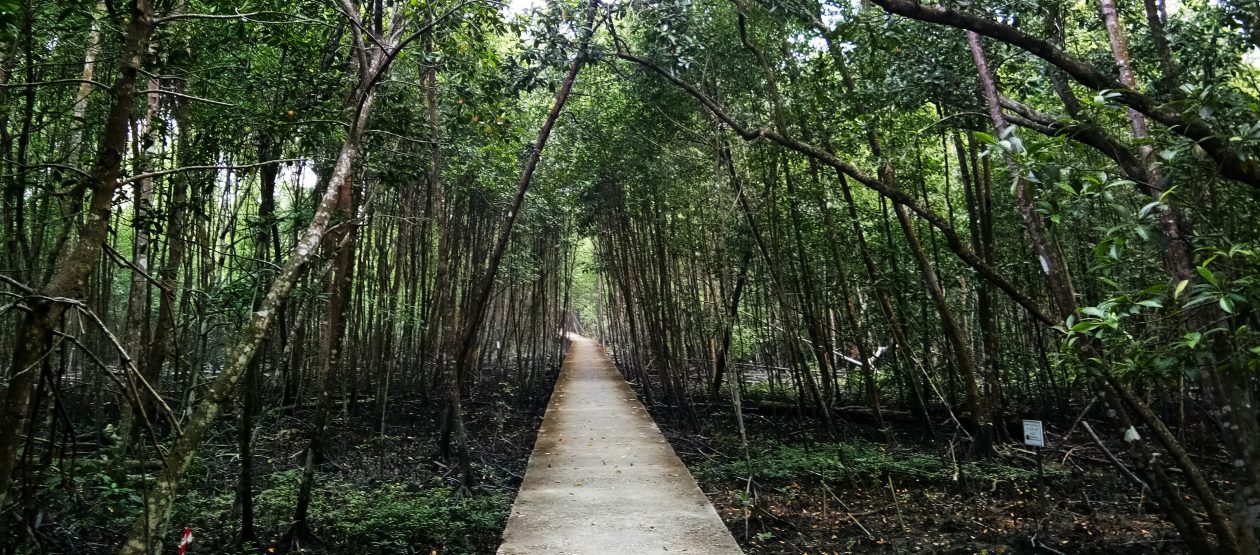CLICK BELOW FOR AUDIO GUIDE
Ficus microcarpa is also known as chinese banyan, malayan banyan, Indian laurel or gajumaru. It is a fast-growing, usually evergreen tree about 30 meters tall and wide, with a flattened or rounded crown. In Peninsular Malaysia, it is common along coasts and in swamps. Its habitat are coastal sites that are dry and that the Chinese planted this species near their shrines.

Branches are horizontal or ascending, with a dense curtain of aerial roots hanging from them, some of which becoming pillar-like to support the widespread branches. These pillar-like roots from large trees can form impenetrable thickets. White latex oozes from all cut surfaces, which may be a defensive adaptation to discourage herbivores as the latex gums up the jaws of the herbivore.

The stalked, alternate leaves have a slightly fleshy or leathery, elliptic, with matte, mid-green upper sides and lighter green below, and flat margins, and rounded tips. The plant is monoecious, producing unisexual flowers on the same individual. Both male and female flowers are stalkless.
The Banyan tree roots has been used as traditional folk medicine for flu, malaria, acute enteritis, and tonsillitis. Due to it’s ability to absorb heavy metals from the soil, it has the potential to be a low environmental risk soil cleaner. Malaysians and singaporeans sometimes refuse to fell large Banyan trees due to Malay and peranakan folklore. Malayan banyan is tolerant of roadside pollution such as sulphur dioxide, lead and cadmium.
This tree may not be desired by the superstitious, because Malay and Peranakan folklore of Southeast Asia associate spirits, ghosts, or the “pontianak” (a woman who died at childbirth to become an undead, female vampire who terrorizes the living) with large trees. Malaysian and Singapore tree cutters often offer prayers before felling large fig trees to appease the resident spirit, or if the tree is too large, they often refuse to fell it.
